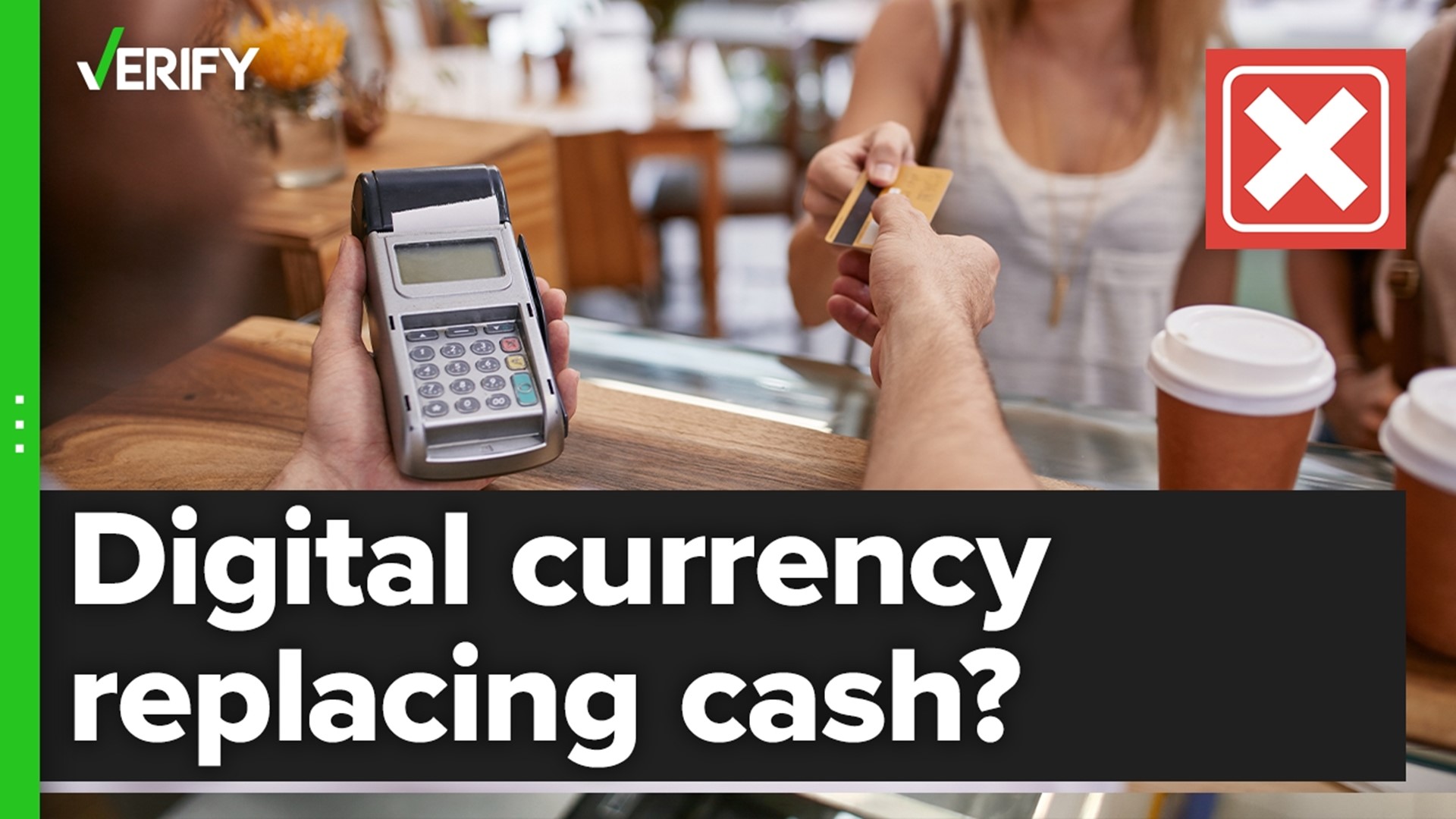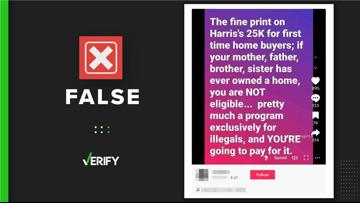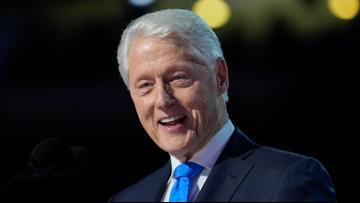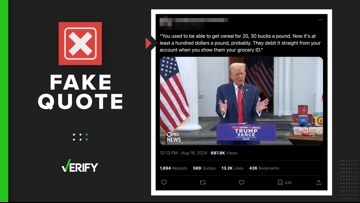Cryptocurrencies like Bitcoin have exploded in popularity in recent years, leading President Joe Biden to sign an executive order in March 2022 that outlines the government’s plan to address the “risks and harnessing the potential benefits of digital assets.”
The executive order also explores the possibility of creating a centralized bank digital currency (CBDC) in the U.S. That’s led some people on social media to claim months later that the executive order would phase out cash and make paper money “worthless.”
VERIFY reader Jerry also emailed the team to ask, “Is President Biden doing away with paper money for digital currency?”
THE QUESTION
Will Biden’s executive order replace paper money with digital currency?
THE SOURCES
- Executive Order 14067
- The Federal Reserve
- The Atlantic Council, a nonpartisan U.S. think tank
- Aaron Klein, senior fellow in economic studies at the Brookings Institution
THE ANSWER
No, Biden’s executive order won’t replace paper money with digital currency.
WHAT WE FOUND
Under Executive Order 14067, the Federal Reserve is tasked with looking into how a Central Bank Digital Currency (CBDC) might be created, and evaluating necessary steps and requirements for implementing one.
The executive order also empowers the U.S. Department of Justice to determine whether the Federal Reserve has the authority to issue a CBDC, according to Aaron Klein, an expert in financial technology and regulation at the Brookings Institution.
The Atlantic Council, a nonpartisan U.S. think tank, defines a CBDC as digital money “backed and issued by a central bank.” In the United States, that central bank would be the Federal Reserve.
The only form of central bank money that Americans can access today is cash, the Federal Reserve notes on its website. Aaron Klein, an expert in financial technology and regulation at the Brookings Institution, explained that the digital money Americans currently use every day with their credit and debit cards comes from commercial banks.
Cryptocurrencies, like Bitcoin, are also considered digital currencies but they aren’t issued by a central bank like a CBDC.
If the Fed creates a CBDC, it would differ from existing digital money because it would be issued and backed by the Federal Reserve instead of a commercial bank.
The federal government hasn't made any decisions yet about issuing U.S. CBDC as a result of the executive order, but creating one wouldn’t mean that the government is getting rid of cash.
“There is nothing in the executive order that ends or eliminates cash. Period,” Klein told VERIFY.
The Federal Reserve also says on its website that it is “considering a CBDC as a means to expand safe payment options, not to reduce or replace them.”
Around 100 countries apart from the U.S. are already exploring CBDCs through research and testing, including some that have already started distributing the virtual money such as Jamaica and Nigeria, according to the Atlantic Council. But it’s unclear exactly how a U.S. CBDC would work if it’s designed and developed by the Federal Reserve.
“We don’t know the answer,” Klein said. “One of the questions out there is, will that mean people get direct accounts at the Federal Reserve, like you have an account at your bank to use a debit card?”
In January 2022, the Federal Reserve released a discussion paper examining the pros and cons of a potential CBDC.
In a press release, the Fed said a CBDC could provide faster payment options between countries and safe digital payment options for households and businesses. However, there could be downsides, including how a CBDC “would preserve monetary and financial stability as well as complement existing means of payment.”
Some consumers may also worry about privacy if the Fed develops a CBDC, which Klein says is a valid concern since “digital transactions can be less anonymous than cash.” But Klein pointed out that these same potential privacy issues already exist when Americans use their debit or credit cards every day.












